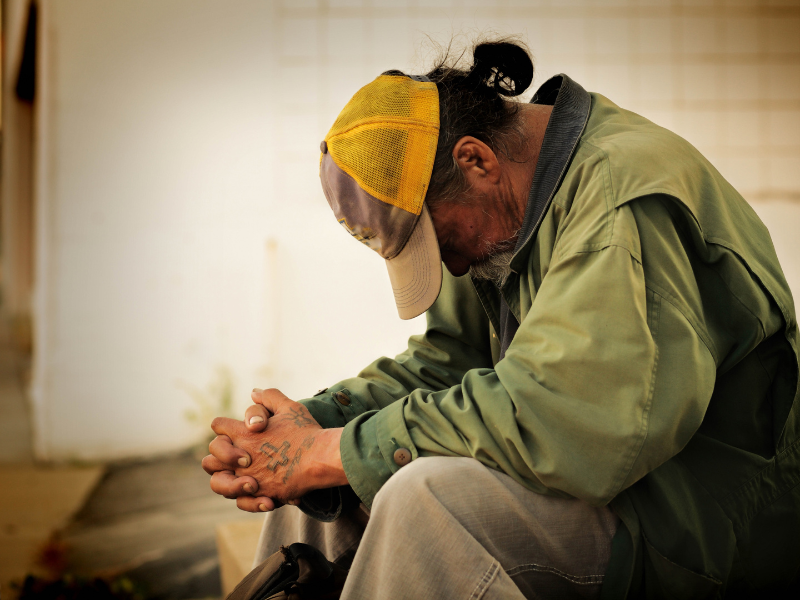
Are Work Requirements Good or Bad?

Are Work Requirements Good or Bad?
Key Points
- The arguments around work requirements ignore the purpose of how our safety net services should work.
- The public, in general, agree with the argument for work requirements because they see the system as a temporary solution.
- We must reform the system so that we move people into opportunity and thriving.
As the federal government debates the debt ceiling and attempts to bring spending under control, one recurring topic is work requirements for adults on government benefits and safety net services. The argument is that implementing work requirements will encourage more people to leave welfare programs, which in turn would decrease spending on one of the biggest expenses in the federal budget.
However, the debate about work requirements should not, in my opinion, be connected to fiscal accountability. Instead, it should be linked to the central purpose of these services and the people needing them.
A look at work requirements
To understand these challenges we need to look at the differing opinions on work requirements. On one side you hear the argument that not requiring work for benefits like SNAP and Medicaid is a disincentive to work for those on benefits. In other words, people are staying on benefits longer than necessary because there is no benefit to getting off, and in many cases, it is more costly to get off.
On the other side, the argument requiring work is simply a way to save money which ultimately hurts the poor. The argument is people in need of food support and healthcare will not be able to work and thus will be forced off of services without work.
Both of these arguments ignore the full experience of those on safety net services. Therefore, I want to challenge us to set aside political talking points and have a real discussion on the issue. These arguments are fraught with finger-pointing and people assigning motivations to each other. The discussion around work requirements is important because it challenges us to ask, “What is the purpose of our welfare system?”
With The Alliance for Opportunity, we are crafting policies that will create a clear path to get off safety net services and into opportunity in Georgia.
With The Alliance for Opportunity, we are crafting policies that will create a clear path to get off safety net services and into opportunity in Georgia.
Work requirements aren’t a bad idea
At the Georgia Center for Opportunity, we generally agree with the idea of work requirements, but not for the reasons political pundits throw around. We are not trying to “weed out bad actors” or trying to reduce government expenditures. Those outcomes may come to pass but they cannot and should not be the intent of such measures.
While there is a politicized debate currently raging, the idea of requiring work to continue to receive benefits is not new. FDR’s New Deal, the framework for our current safety net system, pushed for a system that helped those unable to work like children or disabled individuals. The expansion of such a system to cover the unemployed came later in the process and was designed to be a stopgap between employment.
As the system expanded even further, it became apparent the support should include systems to get people back into work—this led to job training and education programs.
That is where we are today and ultimately how we should be looking at the safety net system for those able to work. The system must be designed to ask, “How can we help you get back on your feet and be self-sustainable?” Not because you are only valuable if you work, but because you are a valuable member of society. This view of membership is probably why work requirements are very popular among the US population. We value and understand the importance of work.
The research on the value of work is expansive. It leads to positive outcomes for families, improved personal mental health, and deeper community value. It is what we should want for people. It is what we should build our services to provide people, not a paycheck but an opportunity.
The arguments against work requirements
The issue becomes more complex when you recognize the valid arguments against work requirements. One of these is that work requirements don’t increase work rates—they simply cut people off of needed services.
The argument is that these requirements add another stress level to people just trying to survive. This creates yet another hurdle for those already struggling to navigate a complex process. The result is people find a different means to survive or they simply give up. Obviously, no one wants to add to people’s burdens.
Rather than arguing against work requirements, these challenges highlight the flaws in our current system. The system is poorly designed and does not lead to the outcomes we want for people.
Work requirements are a good policy in a bad system
Policymakers are notoriously inept when it comes to policy reforms. Half-measures have resulted in a system that is not focused on outcomes. If the system were structured to reduce complexity and alleviate stress for those seeking job support, then a work requirement could be the positive encouragement it should be.
This is one reason we are working with other state think tanks on a One Door Model that would transform our safety net services and create a clear, supportive, and accessible path to work.
These types of policies are critical to ensure that we are helping those in need. They are also critical to ensure that we deliver dignity and hope as an outcome.

About The Author
Corey Burres
VP of Communication and Marketing
Corey Burres is the director the award-winning education documentary Flunked. He served as a consultant with many state think tanks around the country to help them utilize marketing and story telling to improve public policy. He is active in the foster care community and working to help build a better community around him.







